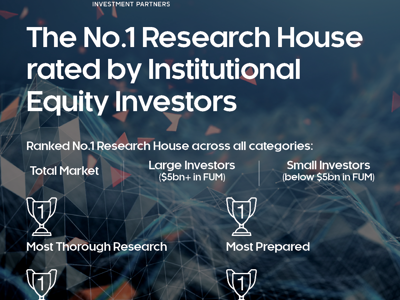Central banks won the battle against inflation in 2023 but as the March quarter data shows, further progress is likely to be more challenging, suggesting that the Reserve Bank of Australia (RBA) may only cut rates once this year, according to Zenith Investment Partners.
If underlying inflation looks like being in the 3 to 3.5 per cent range by the September quarter, Zenith’s head of asset allocation, Damien Hennessy, said he expects a cut in official rates in Australia, possibly in November.
“With the Australian economy slowing, a cut in interest rates could come towards the end of this year and we could possibly see another cut early next year, as households have definitely been hit by higher interest rates,” said Mr Hennessy.
“Even with the oil price rising and recent upside surprises to inflation, US markets appear to be relatively confident that inflation will return to around 2.5 per cent, not far above target and consistent with bond yields remaining below 5 per cent. Despite recent concerns, long-term inflation expectations have not become unanchored,” he said.
“However, stronger-than-expected economic growth in the US has tamed expectations for rate cuts there. While the bond market was expecting more than 2 percentage points of cuts by the US Federal Reserve at the beginning of April, that is now about 0.5 per centage points, given that monetary policy has not worked to slow growth as well as hoped.
“The US economy has proven fairly resilient to the rises in interest rates and much of that has to do with the fact that the majority of US mortgages, around 90%, are fixed rate. That contrasts with the situation in Australia where only about 15 per cent of mortgages are fixed rate. In addition, strong profit growth and lower interest costs for businesses that took advantage of low rates in 2020-21 has left corporate interest cover strong. Interest rates matter much more in Australia and households have been hit harder by higher rates than US households.
“As a result, monetary policy settings in Australia seem to be working more effectively. In the US, growth has remained resilient and that has led to the scenario of no landing being elevated in financial market forecasts, which has seen a rise in bond yields,” he said.
Mr Hennessy still expects a soft landing in the US or a moderate slowdown towards the end of the year. “We see at least a 50 per cent chance of a soft landing in the US. In terms of the risks, there is a higher chance of no landing, or no economic slowdown in the US, which is more likely than a recession,” Mr Hennessy said.
From a portfolio perspective, these factors are considered when Zenith determines asset allocations, according to Steven Tang, head of portfolio solutions.
“We are positioned for a soft landing but also conscious that there is a risk of no landing. We are focusing on those asset classes that aren’t as expensive as the US share market, including global small companies and emerging markets. Global small caps have picked up a bit more recently, but we still maintain an overweight position.
“We are also biased to quality stocks which we think will be better placed than the stock market more broadly for any slowdown. Quality companies are characterised by low debt, stable earnings growth and other metrics such as strength of balance sheet, which will make them more resilient to slowing economic growth.
“Within our defensive assets, we are moderately underweight interest-rate sensitive bonds. Instead, we’ve been investing in higher quality credit lending to strong borrowers which again has been beneficial, and this provides investors with a level of protection in a downturn.
“Overall, we believe we have a good balance of positions to reflect our soft landing outlook but with sufficient levers if the no landing scenario plays out, which supports more robust investment outcomes for our clients,” Mr Tang said.





